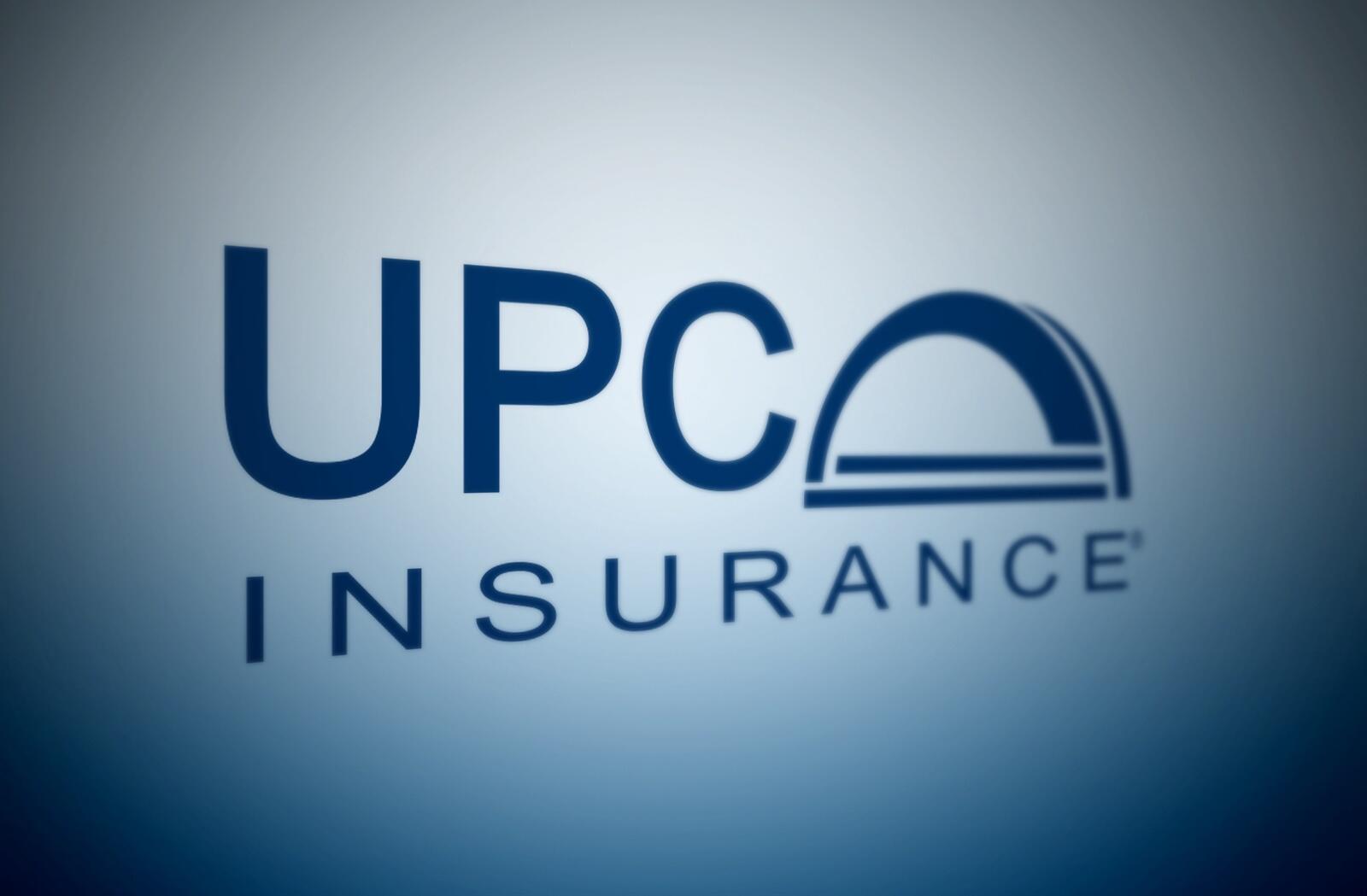

Finance
How Long Does Mortgage Loan Approval Take
Modified: December 30, 2023
Find out how long it takes to get approved for a mortgage loan. Get insights into the finance process and learn about the factors that affect approval timelines.
(Many of the links in this article redirect to a specific reviewed product. Your purchase of these products through affiliate links helps to generate commission for LiveWell, at no extra cost. Learn more)
Table of Contents
Introduction
Applying for a mortgage loan can be an exciting but also a nerve-wracking process. One question that often arises is how long it takes for a mortgage loan to be approved. While there is no one-size-fits-all answer, as the timeline can vary depending on several factors, having an understanding of the process can help set realistic expectations.
When you apply for a mortgage loan, the lender will need to review various aspects of your financial situation to determine your eligibility. This includes assessing your income, credit history, and the property you intend to purchase. These evaluations can take time, and each step of the process has its own set of requirements and potential delays.
In this article, we will explore the factors that can affect the timeframe for mortgage loan approval, as well as the various steps involved in the process. By understanding these factors, you can better prepare yourself and manage your expectations during the loan application journey.
Factors Affecting Mortgage Loan Approval Time
The time it takes to get a mortgage loan approved can vary depending on several factors. Here are some key factors that can influence the approval timeline:
1. Applicant’s financial profile: Lenders need to evaluate the financial stability and creditworthiness of the borrower. This includes looking at factors such as credit score, income, employment history, and debt-to-income ratio. If these aspects are complex or require additional documentation, it can prolong the approval process.
2. Loan type and program: Different loan types, such as conventional, FHA, or VA loans, have different eligibility criteria and processing times. Additionally, certain programs, like first-time homebuyer programs or government-backed loans, may have additional requirements and processing steps that can impact the approval time.
3. Lender’s workload and processing time: The lender’s current workload and processing capacity can significantly affect the approval timeline. During peak seasons or periods of high demand in the housing market, lenders may experience increased volumes of loan applications, which can lead to longer processing times.
4. Property appraisal and assessment: Before approving a mortgage loan, lenders require a property appraisal to determine its value and ensure it meets the loan-to-value requirements. Delays can occur if there are complications with the appraisal process, such as difficulty scheduling an appointment or discrepancies in the property value.
5. Documentation and information accuracy: Incomplete or inaccurate documentation can lead to delays in the loan approval process. It’s crucial to provide all necessary documents and ensure they are accurate and up-to-date. Any discrepancies or missing information may require additional verification and can extend the approval timeline.
6. Underwriting and verification process: Once the necessary documents are submitted, the lender’s underwriting team will review them in detail to assess the borrower’s creditworthiness and eligibility. The underwriting process involves verifying income, employment, assets, and other financial information, which can take time depending on the complexity of the applicant’s financial situation.
By being aware of these factors, borrowers can have a better understanding of why the approval process might take longer than expected. It’s essential to work closely with the lender, respond promptly to any requests for additional documents or information, and maintain open communication to minimize any potential delays.
Initial Documentation and Pre-Approval
The first step in the mortgage loan approval process is gathering the necessary documentation and obtaining pre-approval. This stage typically occurs before you start house hunting and can help streamline the overall process. Here’s what you can expect during this phase:
1. Gather financial documents: To apply for a mortgage loan, you’ll need to provide various financial documents, including bank statements, pay stubs, tax returns, and any other documentation related to your income and assets. It’s important to gather these documents in advance to expedite the pre-approval process.
2. Complete the loan application: The lender will ask you to complete a loan application form where you’ll provide your personal information, employment history, and details about the property you’re interested in purchasing. This form will serve as the foundation for the mortgage loan approval process.
3. Credit check and pre-approval: The lender will run a credit check to assess your credit history and score. This step helps determine your creditworthiness and the loan options available to you. Based on the information provided in the application and the credit check, the lender will issue a pre-approval letter that outlines the amount you are likely to be approved for.
4. Pre-approval benefits: Obtaining pre-approval provides several benefits. Firstly, it gives you a clear idea of your budget and the price range of homes you can afford. This information helps narrow down your search and saves time. Secondly, having a pre-approval letter demonstrates to sellers that you are a serious buyer and increases your chances in multiple-offer situations.
5. Pre-approval validity: It’s important to note that pre-approval letters have an expiration date. Typically, they are valid for around 60-90 days. If you don’t find a property within that time frame or if your financial situation changes, you may need to reapply for pre-approval.
6. Pre-approval does not guarantee final approval: It’s crucial to understand that pre-approval is not a guarantee of final loan approval. The lender will still need to assess the property you wish to purchase, conduct a thorough underwriting analysis, and review any additional documentation before issuing the final approval.
By completing the initial documentation and obtaining pre-approval, you can streamline the mortgage loan process and have a clearer understanding of your budget and purchasing power. This step helps set the foundation for the subsequent stages of the loan approval process.
Loan Application Processing
Once you have completed the initial documentation and obtained pre-approval, the next step in the mortgage loan approval process is the actual processing of your loan application. This phase involves a detailed review of your financial information and the property you intend to purchase. Here’s what you can expect during the loan application processing stage:
1. Submission of additional documents: After obtaining pre-approval, the lender may request additional documents to complete the loan application package. These documents may include bank statements, tax returns, employment verification, and other relevant financial information. It’s important to provide these documents promptly to avoid any delays in the processing of your loan application.
2. Property evaluation and appraisal: The lender will order an appraisal of the property you intend to purchase to determine its market value. They want to ensure that the property is worth the amount you are borrowing. The appraiser will assess the property’s condition, size, location, and comparable properties in the area. The appraisal report plays a crucial role in determining the loan amount you can receive.
3. Verification of information: During this stage, the lender will verify the information provided in your loan application and supporting documents. They will confirm your employment history, income, assets, and liabilities. This verification process may involve contacting your employer, financial institutions, and other relevant parties.
4. Credit underwriting: The lender will conduct a detailed underwriting analysis of your credit history. They will review your credit score, payment history, and any outstanding debts or derogatory marks on your credit report. This step helps determine your creditworthiness and assess the risk involved in extending a loan to you.
5. Loan program review: The lender will review the specific loan program you are applying for to ensure that you meet all the eligibility criteria and requirements. Different loan programs have different guidelines, such as minimum credit score requirements, debt-to-income ratios, and down payment amounts.
6. Processing time: The processing time for your loan application can vary depending on the complexity of your financial situation, the workload of the lender, and any potential issues that arise during the verification process. On average, this phase can take anywhere from a few weeks to a couple of months.
During the loan application processing stage, it’s important to stay in close communication with your lender, promptly respond to any requests for information or documentation, and be prepared for potential delays or additional requirements. By being proactive and organized during this phase, you can help expedite the approval process and move closer to the finalization of your mortgage loan.
Underwriting and Verification
Once the loan application has been processed, the next critical step in the mortgage loan approval process is underwriting and verification. During this stage, the lender’s underwriting team thoroughly reviews and assesses your financial information, creditworthiness, and the overall risk associated with lending to you. Here’s a breakdown of what happens during the underwriting and verification process:
1. Reviewing financial information: The underwriter carefully examines your financial documents, such as bank statements, tax returns, and pay stubs, to verify your income, assets, and liabilities. They analyze your debt-to-income ratio to gauge your ability to handle mortgage payments and evaluate your overall financial stability.
2. Checking credit history: The underwriter reviews your credit report in detail, looking for any past late payments, collections, or other negative items that may affect your creditworthiness. They analyze your credit score to assess your likelihood of repaying the loan and meeting your financial obligations.
3. Evaluating property appraisal: The underwriter carefully reviews the property appraisal report to ensure that the value of the property aligns with the loan amount. They consider factors such as the property’s condition, location, and marketability. If there are any concerns or discrepancies in the appraisal, further action may be required.
4. Verifying employment and income: The underwriter will verify your employment history and income by requesting employment verification forms, contacting your employer, or reviewing tax documents. This step ensures that the income information provided in the loan application is accurate and stable.
5. Assessing loan program guidelines: Each loan program has specific guidelines and requirements. The underwriter compares your financial information against these guidelines to ensure that you meet the eligibility criteria. This includes criteria such as credit score, down payment amount, and debt-to-income ratio.
6. Potential additional requests: Sometimes, underwriters may require additional documentation or information to clarify any discrepancies or ensure a thorough examination of your financial profile. They may request explanations for certain transactions, additional proof of income, or clarification on any outstanding debts.
7. Approval or conditional approval: Based on the underwriter’s evaluation, the loan will either receive full approval or a conditional approval. Full approval means that your loan application has met all the requirements and is ready for the next step. Conditional approval indicates that there are specific conditions or additional requirements that must be fulfilled before final approval can be granted.
The underwriting and verification stage is crucial in determining the final approval of your mortgage loan. It requires attention to detail and thorough analysis of your financial information. By providing accurate and complete documentation, promptly responding to any additional requests, and maintaining open communication with the underwriter, you can help facilitate the process and move closer to securing your mortgage loan.
Appraisal and Property Assessment
As part of the mortgage loan approval process, the lender requires an appraisal and property assessment to determine the value of the property you intend to purchase. The appraisal helps ensure that the loan amount aligns with the property’s market value and mitigates the lender’s risk. Here’s an overview of the appraisal and property assessment process:
1. Appraisal order: Once your loan application is processed, the lender will order an appraisal from a licensed appraiser. The appraiser is an independent professional who evaluates the property’s condition, features, location, and comparable sales in the area.
2. Property inspection: The appraiser will schedule a property inspection to assess its physical condition. They will examine the interior and exterior of the property, looking for any repairs or potential issues that may affect its value. The inspection typically includes examining the structure, utilities, and overall condition of the property.
3. Comparative market analysis: In addition to the property inspection, the appraiser will conduct a comparative market analysis. This involves researching recent sales of similar properties in the area to assess the property’s value. The appraiser will consider factors such as location, size, condition, and amenities when comparing the property to comparable sales.
4. Appraisal report: After the property inspection and comparative market analysis, the appraiser will compile their findings into an appraisal report. This report includes an estimate of the property’s value and any notes or observations about the property’s condition or unique features. The appraisal report serves as a critical document for the lender to determine the loan-to-value ratio.
5. Property assessment issues: In some cases, the appraisal report may uncover issues that could affect the property’s value or make it ineligible for financing. These issues may include structural problems, safety hazards, or code violations. If significant issues are identified, the lender may require repairs or remediation before approving the loan.
6. Appraisal review: Once the appraisal report is completed, the lender’s underwriting team will review it alongside the entire loan application package. They will verify that the property’s value aligns with the loan amount requested and that there are no red flags or discrepancies. The appraisal report is an essential factor in the underwriting decision.
7. Appraisal contingency: In some purchase transactions, there may be an appraisal contingency included in the contract. This contingency allows the buyer to renegotiate or cancel the deal if the appraisal comes in lower than the agreed-upon purchase price. The appraisal contingency provides a layer of protection for buyers to ensure they are not overpaying for the property.
The appraisal and property assessment process plays a critical role in the mortgage loan approval process. It helps protect both the lender and the borrower by ensuring that the loan amount aligns with the property’s value. By understanding and cooperating with the appraisal process, you can navigate this step more effectively and move closer to final loan approval.
Conditional Approval and Loan Conditions
Once the underwriting and verification process is complete, the lender may issue a conditional approval for your mortgage loan. This means that you have met the initial requirements for loan approval, but there are specific conditions or additional documentation that must be satisfied before the loan can be fully approved. Here’s what you need to know about conditional approval and loan conditions:
1. Reviewing loan conditions: The conditional approval letter will outline the specific conditions that need to be met before final loan approval can be granted. These conditions may include providing additional documentation, explaining certain transactions, or meeting certain requirements of the loan program.
2. Timelines and deadlines: The conditional approval letter will typically specify the deadlines for satisfying each condition. It’s important to carefully review these deadlines and provide any requested information or documentation within the specified timeframe. Meeting these deadlines is crucial for ensuring a smooth loan approval process.
3. Additional documentation and information: The lender may request additional documentation or information to clarify certain aspects of your financial profile or verify specific details. This may include bank statements, explanations for large deposits or withdrawals, or updated income verification. It’s important to provide these documents promptly and accurately to satisfy the loan conditions.
4. Clearing outstanding contingencies: In some cases, there may be outstanding contingencies related to the property or the loan application that need to be resolved. These contingencies may involve issues identified during the appraisal, home inspection, or title search. Clearing these contingencies is necessary to satisfy the loan conditions and move towards final loan approval.
5. Communication and collaboration: During the conditional approval stage, it’s crucial to maintain open communication with your lender and promptly respond to any requests or inquiries. Collaborating with the lender and providing the required information in a timely manner will help ensure that the loan conditions are satisfied efficiently.
6. Final review and satisfaction of conditions: Once you have satisfied all the conditions outlined in the conditional approval letter, the lender will conduct a final review of your application and documentation. If everything meets their requirements, you will receive the final loan approval, and the closing process can begin.
Remember that conditional approval is not the same as final loan approval. It’s essential to fulfill all the specified conditions to ensure a successful loan closing. By understanding the loan conditions, maintaining clear communication, and promptly providing any requested information, you can navigate this stage of the process with confidence and move towards the final approval of your mortgage loan.
Final Approval and Closing Process
After satisfying all the conditions outlined in the conditional approval, you are now on the final stretch towards obtaining full approval for your mortgage loan. The final approval stage involves a thorough review and the completion of various tasks leading up to the loan closing. Here’s what you can expect during the final approval and closing process:
1. Final underwriting review: Once all the loan conditions are met, the lender’s underwriting team will conduct a final review of your application, documentation, and any additional information provided. They will ensure that everything is in order and meets their requirements for loan approval.
2. Title search and insurance: As part of the closing process, a title search will be conducted to verify the ownership of the property and to identify any liens or legal issues. Additionally, you will need to obtain title insurance to protect against any potential title defects or claims that may arise in the future.
3. Final loan documents: Once the final approval is granted, the lender will prepare all the necessary loan documents for you to sign. These documents include the promissory note, deed of trust or mortgage, and various disclosures related to the loan terms and conditions.
4. Closing disclosure: Prior to the closing, you will receive a closing disclosure that outlines the final details of the loan, including the loan amount, interest rate, closing costs, and any prepaid expenses. It is important to review this document carefully and ensure that all the figures are accurate.
5. Closing appointment: The closing appointment, often held at a title company or attorney’s office, is where the loan documents are signed, and the property ownership is transferred to you. During this meeting, you will sign all the necessary paperwork, including the mortgage or deed of trust, and pay any closing costs and fees.
6. Funding and disbursement: Once all the documents are signed and the closing is complete, the lender will review the final documentation and authorize the release of funds. This includes funding the loan amount to the seller, paying off any existing liens or mortgages, and distributing any remaining funds to the appropriate parties.
7. Loan servicing: After closing, the servicing of your mortgage loan may be transferred to a different lender or loan servicer. They will be responsible for collecting your monthly payments, managing escrow accounts (if applicable), and providing customer service for any concerns or inquiries related to your loan.
The final approval and closing process is the last step in obtaining your mortgage loan. It’s important to review all documents carefully, ask any questions you may have, and ensure that you understand all the terms and conditions before signing. By being prepared and organized, you can navigate this stage smoothly and officially become a homeowner.
Conclusion
Obtaining a mortgage loan is an involved process with several stages and factors that can impact the timeline. Understanding the steps involved and the potential delays can help you manage your expectations and navigate the process more smoothly. Here are a few key takeaways:
1. Be prepared: Gathering all the necessary documentation and completing the initial pre-approval stage can help streamline the loan application process. Being organized and responsive to lender requests can help prevent delays.
2. Understand the timeline: The time it takes for mortgage loan approval can vary depending on factors such as your financial profile, loan type, and lender’s workload. It’s essential to be patient and communicate regularly with your lender to stay informed about the progress of your application.
3. Fulfill loan conditions: Conditional approval is a significant milestone, but it’s important to meet all the specified conditions to secure final loan approval. Provide any requested documentation promptly and accurately to move towards the closing process efficiently.
4. Collaborate with your lender: Open and clear communication with your lender is key throughout the entire process. Stay in touch, respond promptly to inquiries or requests, and ask questions if you have any concerns or need clarification.
5. Review all documents: At the closing, carefully review all loan documents and the closing disclosure to ensure that all figures and terms are accurate. Seek clarification if anything is unclear before signing.
Remember that obtaining a mortgage loan is a significant financial transaction and commitment. It is important to thoroughly research your options, understand your financial abilities, and work with a reputable lender. By being proactive, organized, and patient, you can successfully navigate the mortgage loan approval process and achieve your goal of homeownership.














